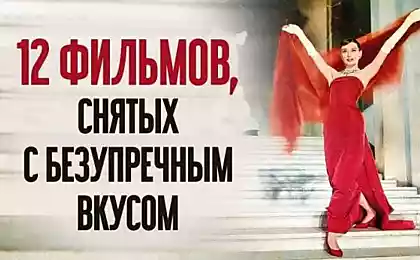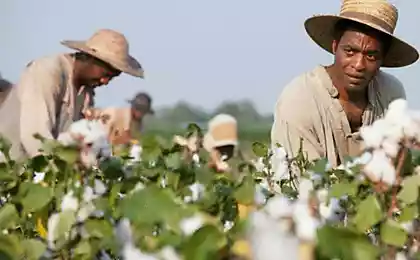2114
Things from sci-fi movies
Perhaps many will agree that the gadgets that we could previously noted in various science fiction films, over time, become very real. Robots, invisibility, lasers, various artificial implants - everything is already invented by scientists. Let us recall what other scientific achievements were predicted in sci-fi movies
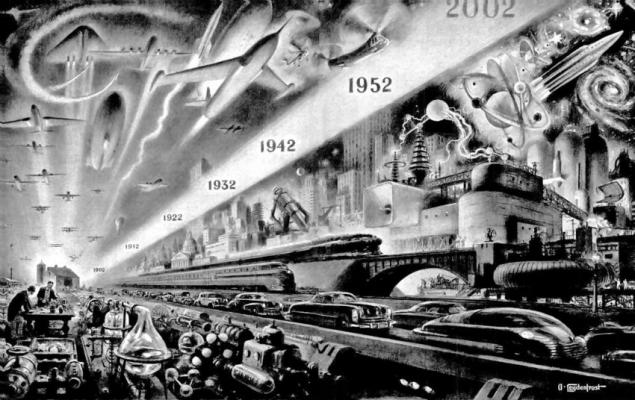
1. The virus that can destroy humanity "War of the Worlds Z», «I - a legend", "28 Days Later", "Resident Evil" Dutch scientist Ron Fouche can claim the title of Dr. Evil. He, along with a team of scientists has created a virus that could destroy the entire human civilization. During the experiments, the virus H5N1, better known as "bird flu", he got a thousand times more dangerous infection. Adding just five mutations in the H5N1 strain has contributed to the fact that in a few hours this virus can be infected several million people. The study has generated heated debate among scientists, many of whom felt that information about the virus should not be published because it could be used by terrorists as a biological weapon. However, in June 2012, the journal Science published a paper still Fouche - experts decided that the benefits outweigh the risks of publication.

2. Cars without drivers "Minority Report," "I, Robot", "5th Element" In science fiction often appear cars that go on autopilot - such, for example, was in "Minority Report" and "I, Robot." Meanwhile, Google, which is actively involved in the development of unmanned vehicle technology, has begun testing these machines in 2010. The system uses the information collected by the service Google Street View, as well as video cameras, sensor LIDAR, installed on the roof, radar in front of a car and a sensor connected to one of the rear wheels, which helps determine the position of the vehicle on the map. The project involved 10 cars: 6 Toyota Prius, Lexus RX460h and 3 1 Audi TT, in total, they traveled around half a million kilometers. The only accident occurred when another car drove into guglmobil standing at a traffic light. The only problem - the car can not move around in the pouring rain, or snow-covered terrain, as the identification of areas is carried out by comparing the images from Google Street View with the results of visualization of the surrounding landscape. Not to be left behind, Volvo has recently developed and successfully tested its own "Caravan technology." In the experiment, three cars, accompanied by a pair of truck, drove 200 km on the highway, and the driver ran only one car, and others followed him in the automatic mode.
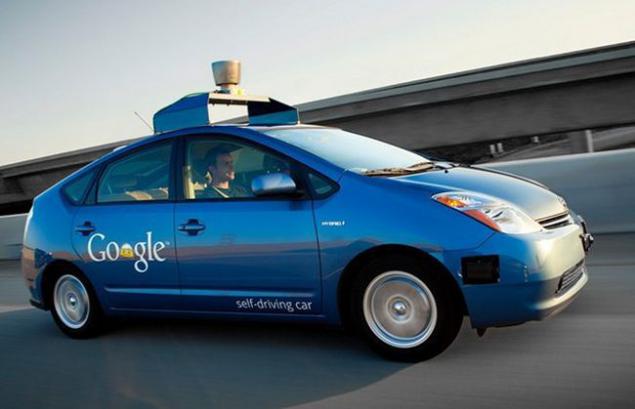
3. Eternal information storage
"The Time Machine»
In the through the 2002 movie "The Time Machine" genius scientist gets into the distant future, 802,701 a year when technocracy century gone. He discovers the ruins of a building with a hologram, which has about eight thousand years, at this moment the audience sighed with the idea that any carrier can not store data as long.
Recently, however, the Japanese company Hitachi introduced a new type of optical media capable of storing information on almost forever "hundreds of millions of years." The thin plate made of transparent quartz glass will withstand temperatures up to 1000 ° C for several hours, water resistant, resistant to chemicals. Binary code is recorded in the four-layer laser dots which are visible in ordinary light microscope. On one plate 2x2 inches and a thickness of 2 millimeters fit while only 25 megabytes.
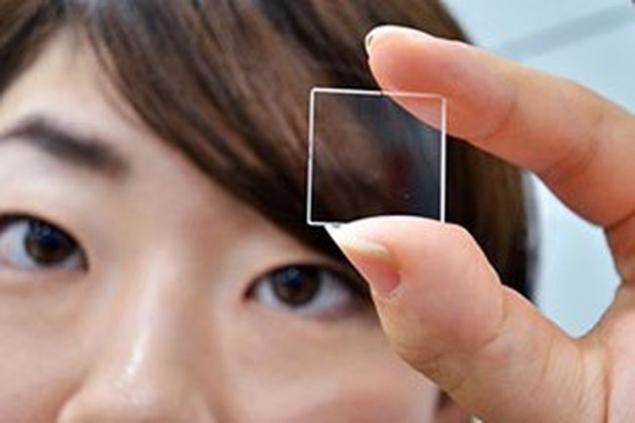
4. Flying mikrodrony "batteries not included" It would seem that could be worse than the humanoid robot Boston Dynamics? Unless mikrodrony - drones the size of a fly, which can take photos, listen and even take your DNA samples without your knowledge. At Harvard have created a miniature robot RoboBee, the weight of which is only 80 mg. It flies using the wings that make for a minute about 7200 strokes. The wings are driven by so-called "muscle", which are reduced to 120 times per second - a rate previously could show only living systems. These muscles are likely to piezoelectric components including motorized actuated discharge current. Mikrodrony is also equipped with a stabilization system and the definition of obstacles - even moving, including the suddenly emerging threats, such as the hands of a man who is going to catch this drone. While it is planned that this "fly" will be used only for peaceful purposes.

5. Fighting android "The Terminator," "Transformers," "Ghost in the Shell", "Blade Runner", "Artificial Intelligence" warriors android - part of the character sci-fi movies. The US company Boston Dynamics last spring introduced an updated version of its anthropomorphic robot Petman. His first prototypes showed back in 2009, but since then it has become even more "humane": got head, chemical protection suits and gas masks. Moves while he stunningly realistic - Petman squats, press and jumping is not worse than living (but pretty tipsy) soldier. While running android is capable of speeds up to 8 km / h. Development Petman was ordered by the Department of Chemical and Biological Defense US, and its main objective is to test various chemical protective suits and other military equipment. In the android built-in sensors capable of detecting dangerous chemicals getting into costume, moreover, "skin" of the robot is able to "sweat" for the greater reliability of the experiment.

6. The bones and organs printed on 3D-printer "Fifth Element" With the development of technology 3D-printing, scientists have learned to print bone. So researchers at Oxford together with biomedical companies DeFelice conducted a successful operation by implementing a patient from the US implant and replacing him 75% of the skull. Missing bones of the skull were printed on 3D-printer. Previously, such implants treated patients in thousands of dollars and were prepared for months, but thanks to new 3D-printers - bones model costs about $ 150 and is only a week. Engineers at MIT have printed a few samples of artificial bones, which were 22 times more resistant to faults and fractures than biological material. In addition to the bones on 3D-printer is quite successful print bodies: in 2011 for educational TED conference was created artificial kidney; in April 2013, scientists from Oxford reported the development of an artificial analogue of nervous tissue, which they have done with the help of a modified 3D-printer; San Diego printed synthetic fragments of the liver; and at Princeton University in the same way have created a bionic ear.
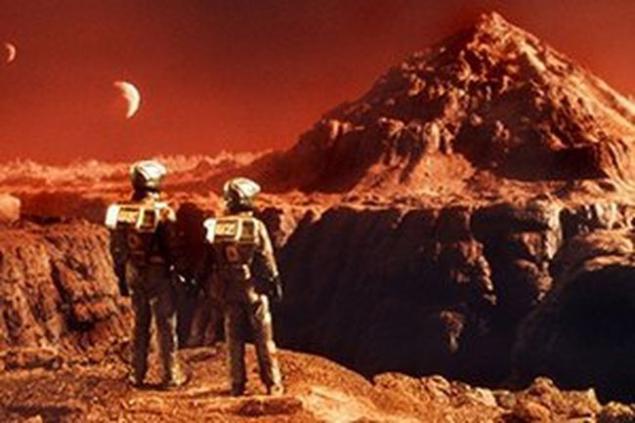
7. The robotic arm that can feel "Homewrecker" scene from "Terminator" Experts from the American defense agency Darpa in conjunction with researchers at Case Western Reserve University in the program (RE-NET) created a high-tech prosthetic hand (just like Luke Skywalker) with new neuromuscular interface FINE. The hand is controlled by the human brain and allows a person to regain not only the course, but also the ability of it to feel things with which it comes into contact. Prosthesis provides sufficient sense of each individual finger, which gives disabled people who have lost a limb, to forget about her absence.

8. Eye "Big Brother" Of all the scenarios of movies about the future most unpleasant events are associated with the government, which is constantly spying on each person. Cameras placed at each corner, a huge database and face recognition system - that's a recipe Department San Diego, which can every second for any photos or video to identify the person of 4,000,000 options. The technology developed by FaceFirst, and even in a crowd, you can not get away from this eye "Big Brother." The system can keep track of each individual, and in just a few seconds, "those who need to" get a letter with complete data on violators who quickly find and neutralize the men in uniform.
--img9--
9. Mission to Mars film about how astronauts are sent to Mars, typed with a couple of dozen. In reality, this program is being developed with the 70s, but only this week, NASA named the names of the eight candidates who will fly to Mars in 2020. After one and a half years of testing among thousands of applicants (one place candidate claimed 780 people) were selected to 8 people. Team's gender equal: four men and four women - all between the ages of 34 to 39 years. It is reported that all of them are high-level professionals in completely different areas: military pilot with the physical education test pilot from the Navy, two test pilot (one with the skills sapper), marine, oceanographer, MD, specializing in emergency situations and sports medicine, and another physician at Harvard. In August, the group will begin its pre-flight training at a training center in Houston.
--img10--
10. The tractor beam "Star Trek" Remember tractor beam from the TV series "Star Trek", capable of moving objects in the air? So, experts from the University of St. Andrews in Scotland, together with physicists at the Institute of Instrumentation Czech Academy of Sciences invented a device of the two lasers, computers and special mirror that can capture particles from the beam. Previously only been able to move individual atoms; Now it became possible to move microparticles of 300-400 nanometers. The device can be used as a "Micro" to move the cell or particle matter. In the future on the basis of this development, scientists plan to create a device capable of moving asteroids or satellites.
--img11--
Source: www.lookatme.ru

1. The virus that can destroy humanity "War of the Worlds Z», «I - a legend", "28 Days Later", "Resident Evil" Dutch scientist Ron Fouche can claim the title of Dr. Evil. He, along with a team of scientists has created a virus that could destroy the entire human civilization. During the experiments, the virus H5N1, better known as "bird flu", he got a thousand times more dangerous infection. Adding just five mutations in the H5N1 strain has contributed to the fact that in a few hours this virus can be infected several million people. The study has generated heated debate among scientists, many of whom felt that information about the virus should not be published because it could be used by terrorists as a biological weapon. However, in June 2012, the journal Science published a paper still Fouche - experts decided that the benefits outweigh the risks of publication.

2. Cars without drivers "Minority Report," "I, Robot", "5th Element" In science fiction often appear cars that go on autopilot - such, for example, was in "Minority Report" and "I, Robot." Meanwhile, Google, which is actively involved in the development of unmanned vehicle technology, has begun testing these machines in 2010. The system uses the information collected by the service Google Street View, as well as video cameras, sensor LIDAR, installed on the roof, radar in front of a car and a sensor connected to one of the rear wheels, which helps determine the position of the vehicle on the map. The project involved 10 cars: 6 Toyota Prius, Lexus RX460h and 3 1 Audi TT, in total, they traveled around half a million kilometers. The only accident occurred when another car drove into guglmobil standing at a traffic light. The only problem - the car can not move around in the pouring rain, or snow-covered terrain, as the identification of areas is carried out by comparing the images from Google Street View with the results of visualization of the surrounding landscape. Not to be left behind, Volvo has recently developed and successfully tested its own "Caravan technology." In the experiment, three cars, accompanied by a pair of truck, drove 200 km on the highway, and the driver ran only one car, and others followed him in the automatic mode.

3. Eternal information storage
"The Time Machine»
In the through the 2002 movie "The Time Machine" genius scientist gets into the distant future, 802,701 a year when technocracy century gone. He discovers the ruins of a building with a hologram, which has about eight thousand years, at this moment the audience sighed with the idea that any carrier can not store data as long.
Recently, however, the Japanese company Hitachi introduced a new type of optical media capable of storing information on almost forever "hundreds of millions of years." The thin plate made of transparent quartz glass will withstand temperatures up to 1000 ° C for several hours, water resistant, resistant to chemicals. Binary code is recorded in the four-layer laser dots which are visible in ordinary light microscope. On one plate 2x2 inches and a thickness of 2 millimeters fit while only 25 megabytes.

4. Flying mikrodrony "batteries not included" It would seem that could be worse than the humanoid robot Boston Dynamics? Unless mikrodrony - drones the size of a fly, which can take photos, listen and even take your DNA samples without your knowledge. At Harvard have created a miniature robot RoboBee, the weight of which is only 80 mg. It flies using the wings that make for a minute about 7200 strokes. The wings are driven by so-called "muscle", which are reduced to 120 times per second - a rate previously could show only living systems. These muscles are likely to piezoelectric components including motorized actuated discharge current. Mikrodrony is also equipped with a stabilization system and the definition of obstacles - even moving, including the suddenly emerging threats, such as the hands of a man who is going to catch this drone. While it is planned that this "fly" will be used only for peaceful purposes.

5. Fighting android "The Terminator," "Transformers," "Ghost in the Shell", "Blade Runner", "Artificial Intelligence" warriors android - part of the character sci-fi movies. The US company Boston Dynamics last spring introduced an updated version of its anthropomorphic robot Petman. His first prototypes showed back in 2009, but since then it has become even more "humane": got head, chemical protection suits and gas masks. Moves while he stunningly realistic - Petman squats, press and jumping is not worse than living (but pretty tipsy) soldier. While running android is capable of speeds up to 8 km / h. Development Petman was ordered by the Department of Chemical and Biological Defense US, and its main objective is to test various chemical protective suits and other military equipment. In the android built-in sensors capable of detecting dangerous chemicals getting into costume, moreover, "skin" of the robot is able to "sweat" for the greater reliability of the experiment.

6. The bones and organs printed on 3D-printer "Fifth Element" With the development of technology 3D-printing, scientists have learned to print bone. So researchers at Oxford together with biomedical companies DeFelice conducted a successful operation by implementing a patient from the US implant and replacing him 75% of the skull. Missing bones of the skull were printed on 3D-printer. Previously, such implants treated patients in thousands of dollars and were prepared for months, but thanks to new 3D-printers - bones model costs about $ 150 and is only a week. Engineers at MIT have printed a few samples of artificial bones, which were 22 times more resistant to faults and fractures than biological material. In addition to the bones on 3D-printer is quite successful print bodies: in 2011 for educational TED conference was created artificial kidney; in April 2013, scientists from Oxford reported the development of an artificial analogue of nervous tissue, which they have done with the help of a modified 3D-printer; San Diego printed synthetic fragments of the liver; and at Princeton University in the same way have created a bionic ear.

7. The robotic arm that can feel "Homewrecker" scene from "Terminator" Experts from the American defense agency Darpa in conjunction with researchers at Case Western Reserve University in the program (RE-NET) created a high-tech prosthetic hand (just like Luke Skywalker) with new neuromuscular interface FINE. The hand is controlled by the human brain and allows a person to regain not only the course, but also the ability of it to feel things with which it comes into contact. Prosthesis provides sufficient sense of each individual finger, which gives disabled people who have lost a limb, to forget about her absence.

8. Eye "Big Brother" Of all the scenarios of movies about the future most unpleasant events are associated with the government, which is constantly spying on each person. Cameras placed at each corner, a huge database and face recognition system - that's a recipe Department San Diego, which can every second for any photos or video to identify the person of 4,000,000 options. The technology developed by FaceFirst, and even in a crowd, you can not get away from this eye "Big Brother." The system can keep track of each individual, and in just a few seconds, "those who need to" get a letter with complete data on violators who quickly find and neutralize the men in uniform.
--img9--
9. Mission to Mars film about how astronauts are sent to Mars, typed with a couple of dozen. In reality, this program is being developed with the 70s, but only this week, NASA named the names of the eight candidates who will fly to Mars in 2020. After one and a half years of testing among thousands of applicants (one place candidate claimed 780 people) were selected to 8 people. Team's gender equal: four men and four women - all between the ages of 34 to 39 years. It is reported that all of them are high-level professionals in completely different areas: military pilot with the physical education test pilot from the Navy, two test pilot (one with the skills sapper), marine, oceanographer, MD, specializing in emergency situations and sports medicine, and another physician at Harvard. In August, the group will begin its pre-flight training at a training center in Houston.
--img10--
10. The tractor beam "Star Trek" Remember tractor beam from the TV series "Star Trek", capable of moving objects in the air? So, experts from the University of St. Andrews in Scotland, together with physicists at the Institute of Instrumentation Czech Academy of Sciences invented a device of the two lasers, computers and special mirror that can capture particles from the beam. Previously only been able to move individual atoms; Now it became possible to move microparticles of 300-400 nanometers. The device can be used as a "Micro" to move the cell or particle matter. In the future on the basis of this development, scientists plan to create a device capable of moving asteroids or satellites.
--img11--
Source: www.lookatme.ru



